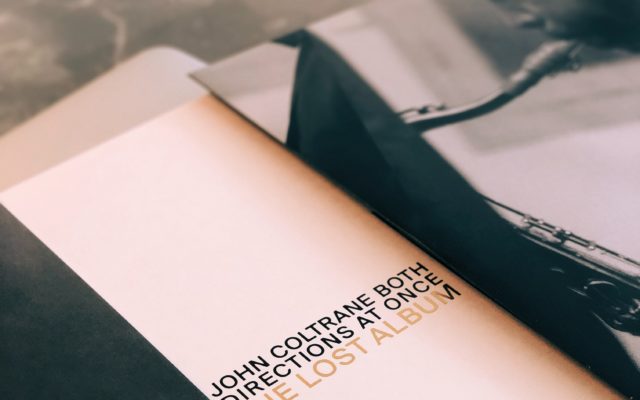There are many ways to be innovative. Jazz saxophonist John Coltrane knew how to be radically different yet still relevant and inspirational to other musicians of many genres, not only jazz – The Doors, an innovative band in their own right, are one example. Miles Davis sensed new trends in jazz before they became mainstream, co-opting and shaping many of them.
Trumpeter Woody Shaw used relatively conventional hard bop and post bop as a platform for his innovative ideas, which included the use of wide intervals and unusual rhythmic phrasing. Pianists and composers McCoy Tyner, Herbie Hancock and Chick Corea have found inspiration in many musical forms, including rock and non-Western music, and are among the most innovative and influential jazz musicians who have ever lived.
Closer to home, business people speak incessantly about innovation, without recognizing the irony of this. Often, they don’t tell us what they mean by it. Merriam-Webster, Business Dictionary and The Free Dictionary offer three official definitions of innovation and, as you can see, they are not identical.
What is Innovation?
The meaning and value of innovation can be highly subjective. Something new may not be useful to me but may be to someone else. At some point, I may need it, however, and I keep a folder with links, articles and other information about ideas I sense I might one day need. Some innovations are never put into practice, thus the phrase “useless innovation.” However, I disagree with those who feel something new must be immediately useful to be considered innovative. Some very good ideas are born in the wrong place or at the wrong time and aren’t appreciated. Like people, ideas can have bad luck.
Innovation need not be radical nor disruptive to be felt – pianist Red Garland, who caught the attention of both Miles and Trane, is an example. Incremental innovations, too, can be very impactful, though we may not talk about them or even notice them. Some new things take many years and many people to develop.
Some innovations are developed independently in several places at several times – principal components analysis comes to mind. On a personal note, in the late 80s, I developed a segmentation method that later came to be called canonical cluster analysis. I dubbed it joint-space clustering and used it for my own work without attempting to publicize it.
A few years later a statistician in France independently came up with the same idea, giving it the far sexier name. I learned of his efforts in the late 90s, but there may have been others before either of us who used canonical clustering or something similar. It has since been largely displaced by latent class but did come in handy for me on many occasions.
Like many people, I suspect, I often use innovation to mean something new that I like. I tend not to distinguish it from discovery or invention, though I probably should. I associate innovation with being clever but am less impressed with complicated innovations I do not understand very well, for example, a new theory in physics. It’s hard for me to appreciate something I am unable to grasp.
On the other hand, a new idea that, in retrospect, seems obvious even though no one had thought of it before greatly impresses me. Why didn’t I think of that? It was right in front of my nose! Inside the Box (Boyd and Goldenberg) shows how we can use old things in very new and imaginative ways.
What is innovation within marketing research? A former colleague was one of the earliest to use mobile phones for survey research. Around the same time (the 90s) some colleagues were looking into text mining focus group transcripts and what are now called insights communities (though that idea has old roots).
In the early 90s, some other associates were working on automated reporting and charting as well as simulation games for training marketing teams. In the late 80s, a future colleague began developing a questionnaire design tool similar to what Survey Monkey started selling a decade later. I’ve been interested in the potential of neuroscience in marketing for nearly 30 years but, until the past decade or so, discussions along these lines made many folks queasy.
Marketing scientists can cite scores of statistical techniques now used in marketing research. Multilevel modelling, mixture modelling, SEM, LARS, GARCH and random forests are just a few of the more sophisticated ones. There also have been very rapid developments in Bayesian statistics in the past couple of decades. Some might consider Sawtooth Software’s ACA an early example of AI – that’s in fact how I described it to my boss when I first learned of it in the mid-80s.
Compared with other fields, marketing research, in general, has been slow to adopt new quantitative analytics tools. Many innovations associated with big data and data science are now used in MR, though, besides sophisticated statistical methods. In addition, there are all sorts of new tools for qualitative researchers. Software for visualizing data and presenting results has been proliferating in recent years, as well.
I’ve just scratched the surface of what I know and, though I spend many hours a week searching for new ideas, there surely is vastly more I don’t know about that I should. However, I should stress that I’m happy to use anything, new or old if it helps me get the job done. New=Good, Old=Bad is an uninformed way of viewing the world.
Marketing research seems to be fragmenting into narrow specializations centred around software for data collection, data processing and automated analytics. For better or for worse, some of these new methods and tools are disrupting the industry, and I think we marketing researchers can stop flagellating ourselves for resisting innovation.
Article by channel:
Everything you need to know about Digital Transformation
The best articles, news and events direct to your inbox
Read more articles tagged: Featured, Innovation







